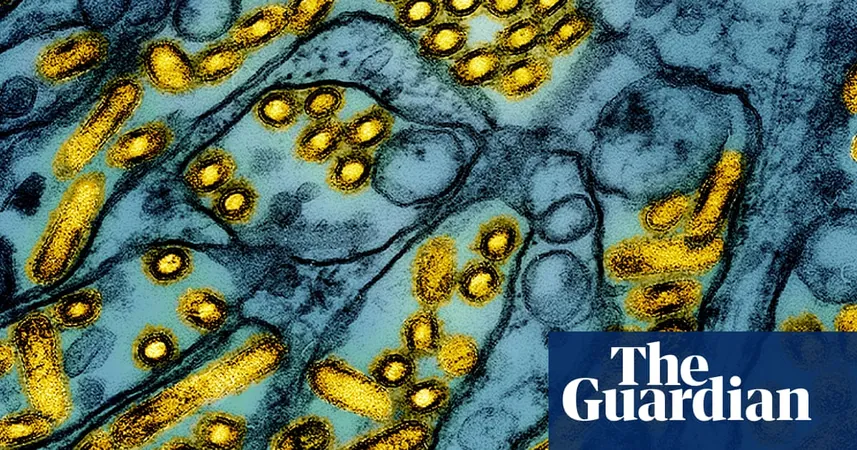
Alarming Bird Flu Mutation Detected in Canada: Could It Threaten Human Health?
2024-11-19
Author: Wei
A teenager in British Columbia has been hospitalized with a severe case of bird flu, raising concerns that the H5N1 virus may have mutated, potentially making it more transmissible among humans. This case serves as a stark alarm about the virus's evolution, particularly as some infections in the United States remain undetected.
Virologist Richard Webby from St. Jude Children’s Research Hospital expressed urgency in monitoring the situation, stating that inadequate testing in the U.S. could lead to missed opportunities to identify mutated strains. "We need to be following this as closely as we can," Webby affirmed, emphasizing that any early warnings about changing viruses could be critical for public health.
The teenager first experienced symptoms on November 2 and was admitted to a children’s hospital six days later. Currently, the patient is in critical condition, suffering from acute respiratory distress syndrome, a life-threatening lung condition. Preliminary genomic analysis of the H5N1 variant affecting the teenager has indicated a mutation that could increase human susceptibility to the virus, suggesting a possible shift from avian to human-like infection patterns.
Expert virologist Angela Rasmussen noted that it’s often not just a single mutation that facilitates human infection. The real-world implications of these changes remain unclear, but experts agree it is a serious warning sign. With the variant circulating in avian populations, researchers are on high alert, particularly after noting that 11 poultry farm workers in Washington state also contracted the virus—albeit without the specific mutation seen in the Canadian teenager.
What’s particularly concerning is the current H5N1 strain circulating in British Columbia and the northwestern United States has shown itself to be highly active in infecting both animals and people. Epidemiologist Bonnie Henry confirmed that strong influenza surveillance is in place, with no additional cases detected among the teenager's contacts as of now. Extensive testing of those close to the patient is ongoing, with results anticipated shortly.
Interestingly, while there have been previous outbreaks among poultry in the region, the teenager did not have direct contact with infected birds but had been around several pets. Experts hypothesize that an encounter with wildlife could have served as a transmission route. Rasmussen explained that many people underestimate the frequency of contact with wild animals and their potential to spread viruses.
Words of caution have been directed towards the United States’ level of testing and surveillance, which many experts believe is lacking. Previously affected farm workers have sometimes been uninformed about the risks they face, leading to higher exposure to the virus. In stark contrast, Canadian officials aim to swiftly identify and isolate potential cases, minimizing risks.
While there is hope that this mutated strain may not spread further, experts note that a history of mutations could lead to future human cases, which would necessitate increased vigilance. The potential for the virus to adapt and spread further underscores the importance of proactive measures. As Webby emphasized, “We’ve got to do something about this virus. We’ve got to get it under control.”
As the world continues to battle various infectious diseases, the evolution of the H5N1 virus represents an urgent reminder of our need to maintain robust public health measures and heightened awareness. The coming weeks will be crucial in determining whether this mutated strain poses a broader threat to human health. Stay tuned as we monitor this developing story.

 Brasil (PT)
Brasil (PT)
 Canada (EN)
Canada (EN)
 Chile (ES)
Chile (ES)
 España (ES)
España (ES)
 France (FR)
France (FR)
 Hong Kong (EN)
Hong Kong (EN)
 Italia (IT)
Italia (IT)
 日本 (JA)
日本 (JA)
 Magyarország (HU)
Magyarország (HU)
 Norge (NO)
Norge (NO)
 Polska (PL)
Polska (PL)
 Schweiz (DE)
Schweiz (DE)
 Singapore (EN)
Singapore (EN)
 Sverige (SV)
Sverige (SV)
 Suomi (FI)
Suomi (FI)
 Türkiye (TR)
Türkiye (TR)